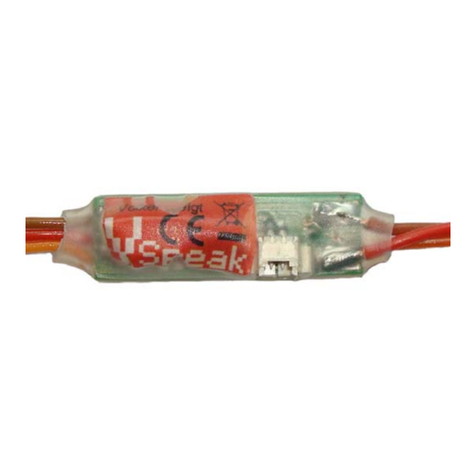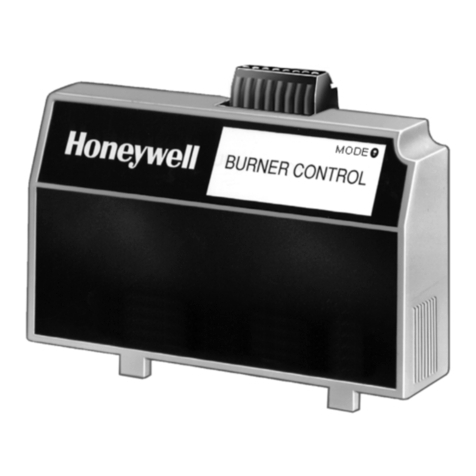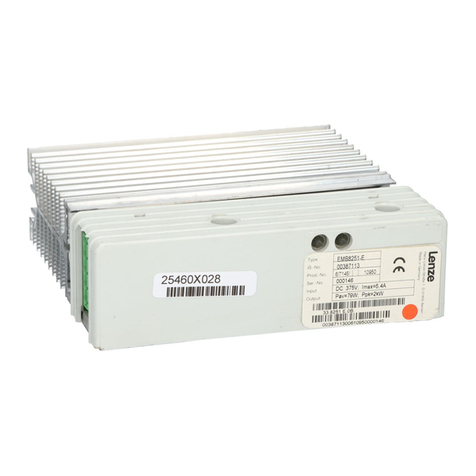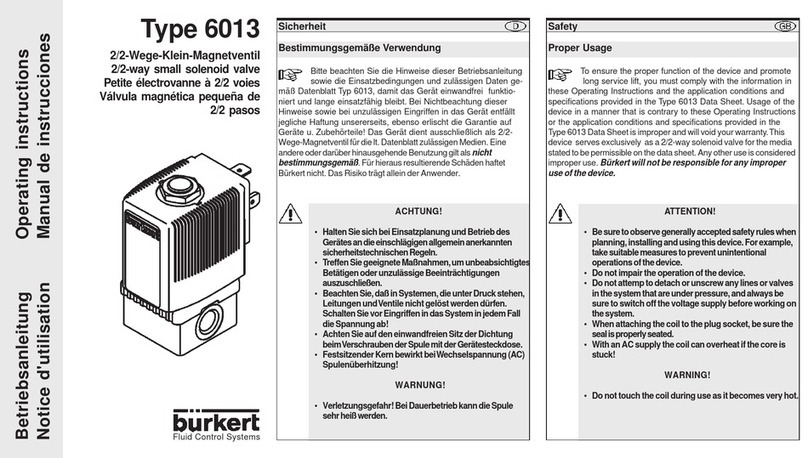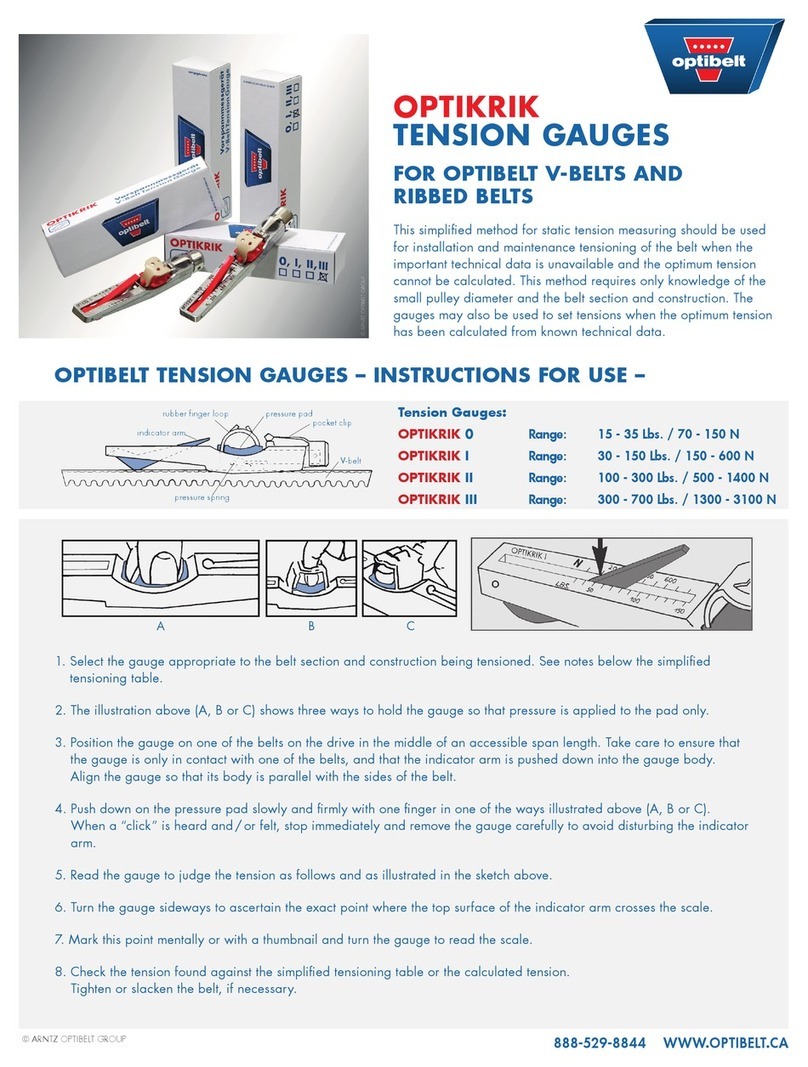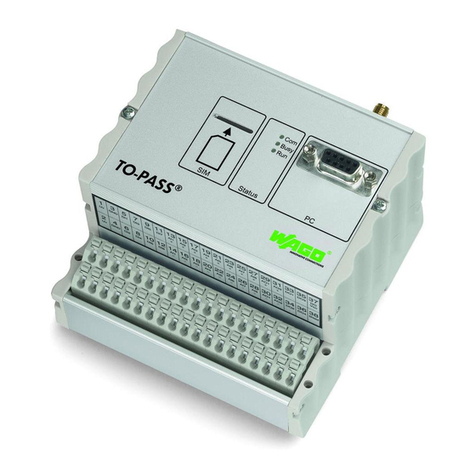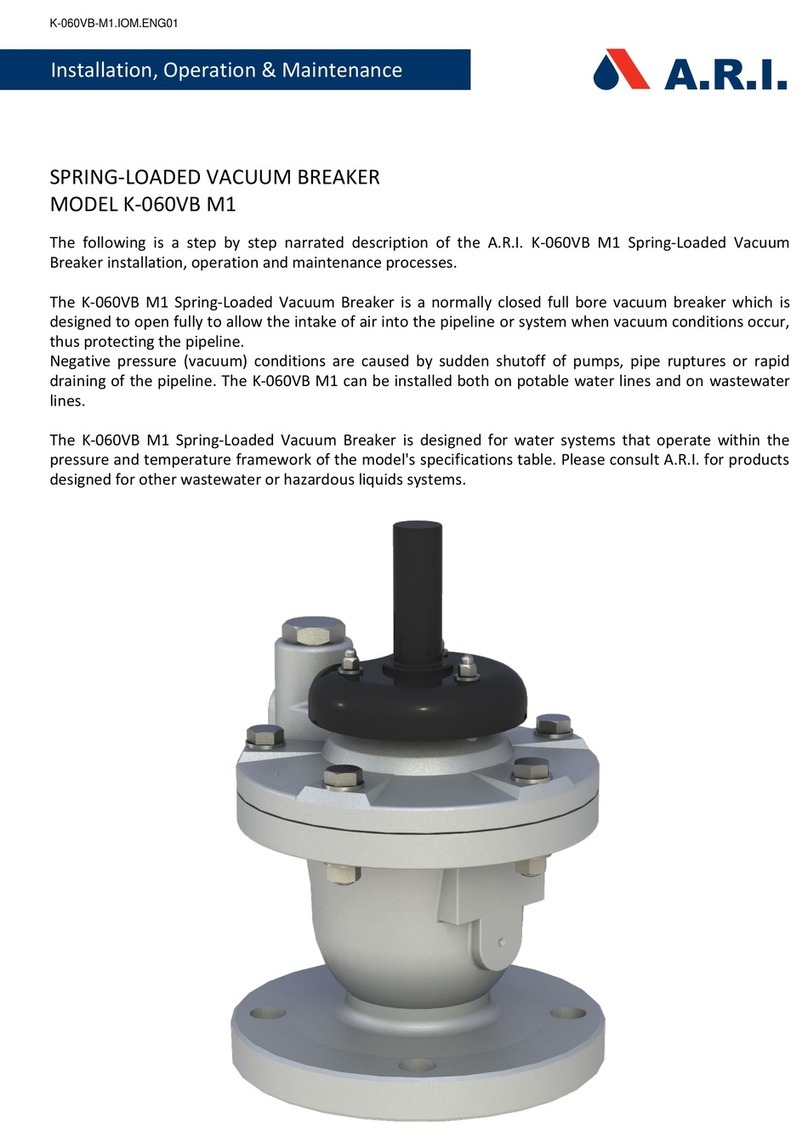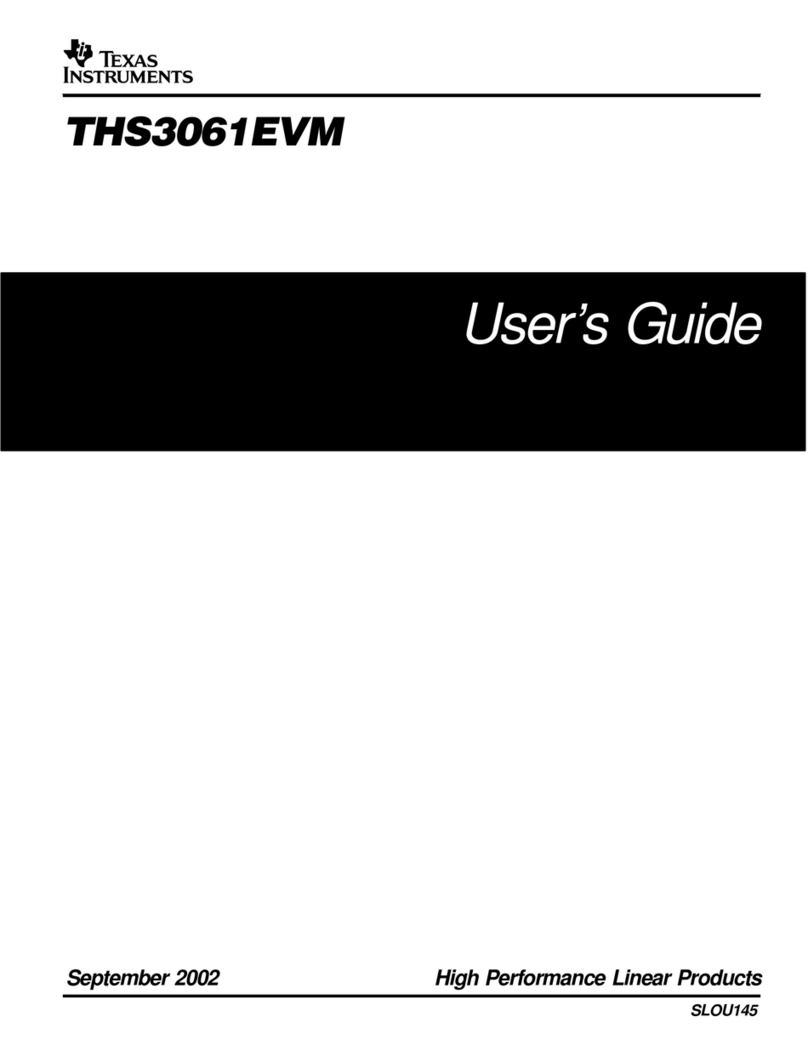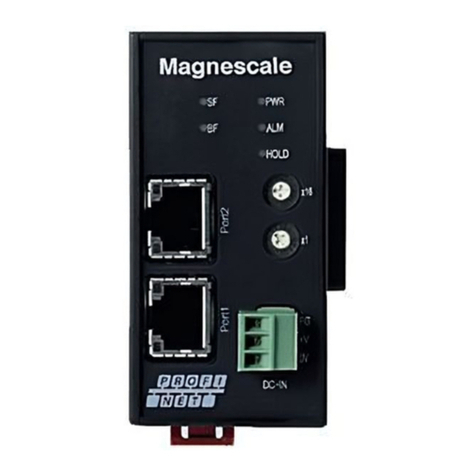Roadmaster BrskeMaster 9000 User manual

Time Tested • Time Proven
ROADMASTER, Inc. •6110 NE 127th Ave. •Vancouver, WA 98682 • 800-669-9690 •Fax 360-735-9300 •roadmasterinc.com
851876-06 12/17 © 2008-2017 ROADMASTER, Inc.
All illustrations and specifications contained herein are based on the latest information available at the time of publication. ROADMASTER,
Inc. reserves the right to make changes, at any time, without notice, in material, specifications and models, or to discontinue models.
This product has a one-year limited warranty. Refer to the BrakeMaster owner’s manual for the full warranty text, including warranty
repair or replacement procedures. A copy of the most current owner’s manual is available online, at www.roadmasterinc.com.
Replacement Proportioning Valve
for BrakeMaster model 9060
Installation Instructions
Part number 900001

Table of Contents
Safety definitions ..............................inside front cover
Before you begin the installation
(installer’s checklist) .....................inside front cover
IMPORTANT NOTICE!
Safety Definitions
These instructions contain information that is very important to know and understand. This information is
provided for safety and to prevent equipment problems. To help recognize this information, observe the following
symbols:
WARNING indicates a potentially hazardous situ-
ation which, if not avoided, could result in property
damage, serious personal injury or even death.
CAUTION indicates a potentially hazardous situ-
ation which, if not avoided, may result in property
damage, or minor or moderate personal injury.
CAUTION
CAUTION used without the safety alert symbol
indicates a potentially hazardous situation which,
if not avoided, may result in property damage.
NOTE
Refers to important information and is placed in italic
type. It is recommended that you take special notice
of these items.
This is a replacement for the proportioning valve in
BrakeMaster model 9060 systems.
These instructions assume that all other BrakeMas-
ter components are installed, and that you will con-
nect the replacement proportioning valve at the same
location as the original. (If you will not connect the
replacement valve at the same location, do not use
these instructions. You must use the original Brake-
Master 9060 installation instructions, available at www.
roadmasterinc.com under ‘Support.')
Additional components, not supplied with the valve,
are necessary. See step 2, below.
These instructions pertain to the initial instal-
lation of the proportioning valve and associated
components only. Operating instructions are con-
tained in the owner’s manual.
Read all instructions before installing or operat-
ing the BrakeMaster system. Failure to understand
how to install or operate BrakeMaster could re-
sult in property damage, personal injury or even
death.
1. Do not discard any of the components that were
attached to the valve; they will be used with the re-
placement valve. These components include —
•all wiring connected to the proportioning valve;
•the air lines connected to the proportioning valve
(including the two compression nuts, ferrules and brass
inserts — see Figure 3);
•the 3/8" nuts and bolts used to attach the propor-
tioning valve to the frame of the motorhome;
•the brake line tee and the section of brake line at-
tached to it;
•the brake line flair adaptor (if used); and
•the metric-to-standard brake line converter (if
used).
2. In addition to the components above, you will also
need —
•a ¼" rubber brake line plug; and
•a 12-10 gauge (yellow) butt connector if the motor-
home has separate brake and turn signals or a 16-
14 gauge (blue) butt connector if the motorhome has
combined brake and turn signals.
Install the proportioning valve ................................ 1-2
Bleed the brakes ....................................................3-4
System test................................................................ 5
Before you begin the installation…

1
Figure 1
— SIDE VIEW —
If the motorhome is raised at any time dur-
ing the installation, it must be on a hoist. If you
will work under the motorhome without it being
raised, it must be safely and securely supported
and blocked.
If the motorhome is equipped with an air suspen-
sion system and a line to the air suspension system
is inadvertently opened, or if the motorhome’s air
suspension system is turned off, the motorhome
will lower to the ground.
The motorhome may unexpectedly roll forward
or backward, especially if it is on an incline, if it
is not blocked.
Failure to follow these instructions may cause
property damage, personal injury or even death.
1. Disconnect the air lines and wiring from the original
proportioning valve.
Note: the “in” and “out” air lines (attached at the
fittings shown in Figure 2) are identical. Mark or oth-
erwise identify them before disconnecting them — the
supplemental braking system will not work if the air
lines are reattached to the wrong fittings.
Note: there are two wires extending from the sole-
noid valve (Figure 1). One is connected to ground; the
other to the brake light wire. Disconnect the ground
wire. Remove the butt connector from the brake light
wire and discard the butt connector, noting whether it
is a 16-14 gauge (blue) or 12-10 (yellow) connector.
Position a pan or bucket under the fitting attaching
the section of brake line to the port (Figure 1) to catch
any brake fluid. Unscrew the fitting.
Figure 2
— END VIEW —
Plug the line with a ¼” rubber brake line plug (not
included) to prevent any further loss of brake fluid.
2. Remove the master cylinder reservoir cover and, if
necessary, fill the reservoir with brake fluid, up to the
maximum marking. Reattach the cover.
Wear appropriate eye protection when work-
ing on the brake system. If brake fluid comes into
contact with your eyes, follow the manufacturer’s
continued on next page
Install the proportioning valve

continued from preceding page
instructions.
Failure to follow these instructions may cause
severe eye injury.
Never use old brake fluid to fill the master cyl-
inder or to replace lost brake fluid. Old brake fluid
contains moisture and contaminants which may
damage the braking system or cause the brake fluid
to boil under certain conditions.
Failure to follow these instructions may result
in a complete loss of braking pressure, which may
cause property damage, personal injury or even
death.
CAUTION
Check the brake fluid level after the brake line
fitting is disconnected and after the replacement
proportioning valve is installed. Add brake fluid as
necessary to prevent the brake fluid level from fall-
ing low enough to allow air bubbles into the master
cylinder. If air is allowed into the brake system from
the master cylinder, all brakes and any components
connected to the hydraulic brake system must be
bled.
3. Unthread the two 3/8" bolts and nuts attaching the
proportioning valve to the frame (Figure 2) and remove
the valve.
4. Before attaching the replacement proportioning
valve, first remove any residual vacuum from the mo-
torhome’s brake power booster (if the motorhome is so
equipped) — apply the motorhome brake several times,
with the engine off.
5. Install the replacement proportioning valve in the
same location as the original valve, with the same air
line and wiring attachments as the original.
The proportioning valve must be mounted with
the bleeder valve (Figure 2) pointing up. The valve
will not bleed the brake system if it is not pointing
up, which will cause brake failure.
Failure to follow these instructions may cause
Install the proportioning valve
2
property damage, personal injury or even death.
•Before reattaching the air lines to the “in” and “out”
fittings on the replacement proportioning valve (Figures
1 and 2), make certain that the brass insert and ferrule
(Figure 3) are in place on both air lines. Then push
each air line into the compression fitting (Figure 3) as
far as it can go.
Push the ferrule into the compression fitting and
tighten the compression nut (Figure 3) onto the fit-
ting.
Note: if the brass inserts are omitted, the fittings
will not be airtight.
Note: if the compression nut is overtightened, the
fitting will not be airtight. After completing the installa-
tion, check all the fittings for air leaks — see “System
Test.”
•Reattach the ground wire (Figure 1) from the sole-
noid valve to its previous location.
•Reattach the other wire from the solenoid valve to
the wiring it had previously been attached to. Use a new
butt connector (not supplied) with the same gauge as
before — either a 16-14 gauge (blue) or a 12-10 gauge
(yellow).
If the section of brake line between the propor-
tioning valve and brake tee (Figure 1) has become
bent or kinked, replace it with another section of
brake line (not supplied).
A kink in the brake line will cause brake failure,
which may result in property damage, personal in-
jury or even death.
6. The process of installing the proportioning valve
has allowed air to enter the braking system. The air in
the proportioning valve, as well as the air in the brake
lines, must be bled before the motorhome is driven.
7. First, using a 1/4" wrench at the bleeder valve (Fig-
ure 2), bleed the air out of the proportioning valve. Do
not loosen the 1/2" fitting.
After the air is bled from the proportioning valve,
proceed to the next section — “Bleed the Brakes.”
After the proportioning valve is installed, bleed
the air from the valve (as described above), as well
as the motorhome’s brake system, before driving
the motorhome.
Failure to bleed the brakes will cause a reduction
in braking efficiency or a complete loss of brake
pressure, which may result in property damage,
personal injury or even death.
Figure 3

Bleed the brakes
After the proportioning valve is installed, bleed
the air from the valve (as described in step 7 un-
der “Install the proportioning valve”), as well as
the motorhome’s brake system, before driving the
motorhome.
Failure to bleed the brakes will cause a reduction
in braking efficiency or a complete loss of brake
pressure, which may result in property damage,
personal injury or even death.
General information
You must bleed the brakes of every wheel that is
downstream from the brake tee (Figure 1) that was
used to install the proportioning valve.
Instructions for bleeding all of the brake lines are in-
cluded; however, it is not necessary to bleed the brakes
upstream from the brake tee, unless air was allowed
into the master cylinder by not replenishing lost brake
fluid.
We have included the generally-accepted methods
for bleeding brakes. However, applications vary. Before
bleeding the brakes, refer to the motorhome chassis
manufacturer for specific procedures.
CAUTION
Check the brake fluid level often while bleeding
the brakes. Add brake fluid as necessary to pre-
vent the brake fluid level from falling low enough
to allow air bubbles into the master cylinder. If air
is allowed into the brake system from the master
cylinder, all brakes, and all components connected
to the hydraulic brake system, must be bled.
Never use old brake fluid to fill the master cylin-
der, or to replace lost brake fluid. Old brake fluid
contains moisture and contaminants which may
damage the braking system or cause the brake fluid
to boil under certain conditions.
Failure to follow these instructions may result
in a complete loss of braking pressure, which may
cause property damage, personal injury or even
death.
Wear appropriate eye protection when work-
ing on the brake system. If brake fluid comes into
contact with your eyes, follow the manufacturer’s
instructions.
Failure to follow these instructions may cause
severe eye injury.
For ABS (anti-lock braking systems)…
The front of an ABS system can be bled in the
same manner as the traditional method described be-
low. However, the rear brakes must be bled with a pres-
surized bleeder system, or, the hydraulic accumulator
must be fully charged.
The hydraulic accumulator can be charged by start-
ing the engine.
Traditional method
This method requires:
•an assistant (to pump the brake pedal)
•a box-end wrench suitable for the vehicle’s bleed-
er screws. (An offset wrench allows the most move-
ment.)
•a supply of brake fluid
•a disposable container
•a length of clear plastic tubing to fit over the bleeder
screws. (The tubing must have an inner diameter which
will allow it to seal over the bleeder screws.)
1. First, remove the master cylinder reservoir cover
and fill the reservoir with brake fluid (if necessary) up
to the maximum marking. Reattach the cover.
Check the brake fluid level frequently while bleeding
the brakes.
2. If bleeding all brake lines, the sequence is deter-
mined by the location of the lines in relation to the mas-
ter cylinder — in general, always bleed the brake line
farthest from the master cylinder first, then the other
brake line in the same half of the circuit just bled:
If you know that the brake system is split front to
rear, as is the case with many rear wheel drive vehicles,
the sequence is as follows:
1. right rear
2. left rear
3. right front
4. left front
If you know that the brake system is split diagonally,
as is the case with many smaller front wheel drive
vehicles, the sequence is as follows:
1. right rear
2. left front
3. left rear
4. right front
3. Loosen the bleeder screw at the first wheel cylinder.
Remove the rubber cap (if present).
4. Position the box-end wrench over the bleeder
screw.
5. Place one end of the clear plastic tubing over the
nipple of the bleeder screw, and place the other end
of the tubing into the disposable container.
6. Instruct the assistant to “apply.” The assistant should
pump the brake pedal three times, then hold the pedal
down firmly and respond with “applied.”
continued on next page
3

Bleed the brakes
Traditional method
continued from preceding page
7. Loosen the bleeder screw with a brief quarter turn,
just enough to allow a solid stream of brake fluid to
flow through the tubing. (The brake pedal will “fall” to
the floorboard as the bleeder screw is opened. Instruct
the assistant in advance not to release the brakes until
instructed.)
8. Close the bleeder screw by tightening it gently.
9. Instruct the assistant to “release” the brakes.
Note: do not release the brake pedal while the
bleeder screw is open — air will be pulled into the sys-
tem.
The assistant should respond with “released.”
10. Inspect the fluid in the disposable container for air
bubbles.
11. Continue to bleed the brake fluid until air bubbles
are no longer present.
12. Replace the rubber cap you removed earlier (if one
was present).
13. Move on to the next wheel cylinder and repeat the
process described above, until all of the brake lines
have been bled.
Check the brake fluid level in the master cylinder
reservoir after bleeding each wheel. Add fluid, as nec-
essary, to keep the level at the maximum marking.
When all of the brake lines have been bled, check
and refill the master cylinder reservoir, if necessary.
14. Clean any residual brake fluid from the fittings and
allow the fittings to dry. With the engine running and
the brake pedal firmly depressed, inspect the bleeder
screws and other fittings for leaks. Correct, if neces-
sary. Inspect the proportioning valve and the brake
line fittings at the six points indicated in Figure 4 and
correct, if necessary
15. Depress and release the brake pedal several times
— it should feel firm and solid when it is depressed.
If the brake pedal does not provide firm resistance,
there is air in one or more of the brake lines. Bleed the
brake lines again, as described above.
If the brake pedal does not provide firm resis-
tance after the brakes have been bled, bleed the
brake lines again. Do not drive the motorhome until
the brake pedal provides firm resistance when it is
depressed.
The brakes will not function at full capacity, or
may not function at all, with air in the lines. Insuf-
ficient brake pressure may result in property dam-
age, personal injury or even death.
One-person methods
There are a number of commercially-available prod-
ucts which allow one person to bleed the brake lines.
They use two general methods — vacuum bleeding
and pressurized bleeding.
Vacuum bleeding systems use a vacuum to draw
the air out of the brake system, eliminating the need
for an assistant. Typically, a tube runs from the bleeder
valve to a sealed container. Another tube runs from the
container to a hand-held pump.
When the bleeder valve is opened, the pump draws
the brake fluid and air bubbles out of the brake line
and into the container.
If you use this method, follow the same sequence
as described in the traditional method.
Pressurized bleeding systems are used by many
professional mechanics. These systems attach to the
top of the master cylinder reservoir and pressurize the
hydraulic fluid in the brake lines, eliminating the need
for an assistant.
If you use this method, follow the same sequence
and procedures as described in the traditional meth-
od.
Figure 4
4

System test
Connect the vehicles for towing
Note: refer to the appropriate owner's manuals to
connect the tow bar and BrakeMaster.
1. Connect the tow bar to the motorhome and the
towed vehicle.
2. According to the manufacturer, make all adjustments
necessary to prepare the vehicle for towing. These
adjustments may include: turning the ignition key to the
‘tow’ position; pulling fuses; disconnecting the battery;
and setting the transmission to a particular gear or in
a particular sequence.
3. Connect the patch cord between the two vehicles
— both the air line quick couplers and the motorhome
monitor bullet connectors.
4. Attach the air cylinder to the brake pedal and mount-
ing post (or seat bracket adaptor). Connect the male
quick coupler at the end of the air line on the air cyl-
inder to the female quick coupler at the end of the air
line mounted in the passenger compartment.
5. Clip one end of the steel break away cable to the
break away pin; clip the other end of the cable to the
rear of the motorhome, close to the center.
Test the system
1. Turn the motorhome engine on and leave it run-
ning.
2. Check for leaks in the air system: cover each joint,
fitting and connection on the proportioning valve (Fig-
ure 4) with a leak check solution.
The air system now contains pressurized air,
which may cause severe eye or ear injury if it is
inadvertently released. Wear appropriate eye and
ear protection before adjusting the air system con-
nections and fittings.
Tighten any fittings, if necessary, and repeat until
all connections are airtight.
3. Confirm braking: depress and hold the motorhome
brake pedal down. The towed vehicle's brake pedal will
be depressed. Release the motorhome brake pedal. At
the towed vehicle, the brake pedal will retract.
4. Confirm that the motorhome monitor is function-
ing — the LED will illuminate after the motorhome's
brake pedal is depressed and stop illuminating when
the brake pedal is released.
If the LED does not illuminate, as described
above, identify and correct the cause of the mal-
function before using the supplemental braking
system.
The LED is the only indication of braking ac-
tivity at the motorhome. Severe damage to the
towed vehicle, a loss of vehicular control or other
consequential, non-warranty damage can occur if
the driver of the motorhome is unaware that the
supplemental braking system is not functioning
properly.
Failure to follow these instructions may cause
property damage, personal injury or even death.
5. Confirm the proper operation of the break away
system —
Note: the break away system was an optional ac-
cessory for the BrakeMaster 9000; it is included with
the BrakeMaster 9060.
Charge the break away reservoir — start the mo-
torhome and allow the air compressor to run until it
shuts off. Then apply the motorhome brakes and hold
the brake pedal down, until the air compressor shuts
off again (approximately 45 seconds).
The break away air reservoir must be charged,
as described above, every time the motorhome and
towed vehicle are connected. If the air reservoir is
not charged, the break away system will not apply
braking pressure if the towed vehicle separates
from the motorhome, which may cause property
damage, personal injury or even death.
Remove the break away pin at the front of the break
away switch. The air cylinder and pedal clamp will ex-
tend.
To retract the air cylinder and pedal clamp, briefly
disconnect the quick couplers from the air line extend-
ing from the air cylinder. Then reconnect the break
away pin.
Before towing, charge the break away air reservoir,
as described above.
5

“We get your towed car there,
while stopping safely along the way.”
Time Tested • Time Proven
ROADMASTER, Inc. • 6110 NE 127th Ave • Vancouver, WA 98682
800-669-9690 • fax 360-735-9300 • roadmasterinc.com
All illustrations and specifications contained herein are based on
the latest information available at the time of publication. ROADMAS-
TER, Inc. reserves the right to make changes, at any time, without
notice, in material, specifications and models, or to discontinue
models.
Table of contents
Popular Control Unit manuals by other brands
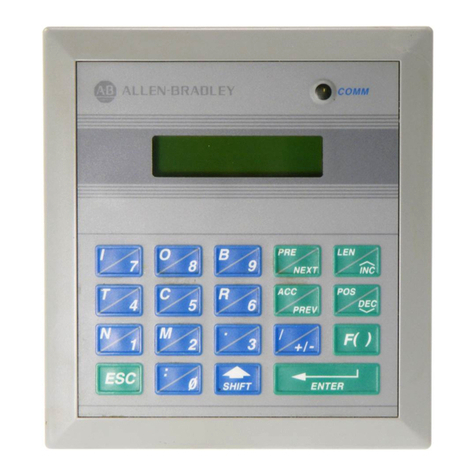
Allen-Bradley
Allen-Bradley 1747-DTAM-E user manual

Newland
Newland NLS-EM3096 Integration guide

schmersal
schmersal PSCBR-C-10 Series installation manual

Mitsubishi Electric
Mitsubishi Electric Q64RD user manual

Wi2Wi
Wi2Wi W2SW0025 user manual
Cypress Semiconductor
Cypress Semiconductor CY8CKIT-042-BLE Guide
